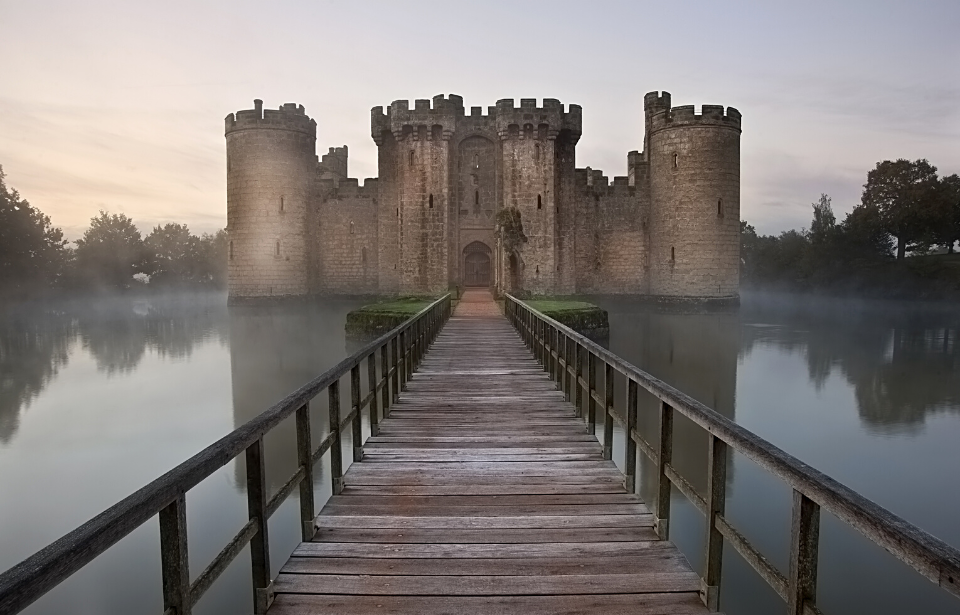Many medieval castles have survived the test of time, and many of them also withstood the test of invasion from intruders. A variety of castle defenses were put in place to help ensure the safety of the people inside. This list highlights just a few of the features that made attacking a medieval castle a bad idea.
Arrow slit
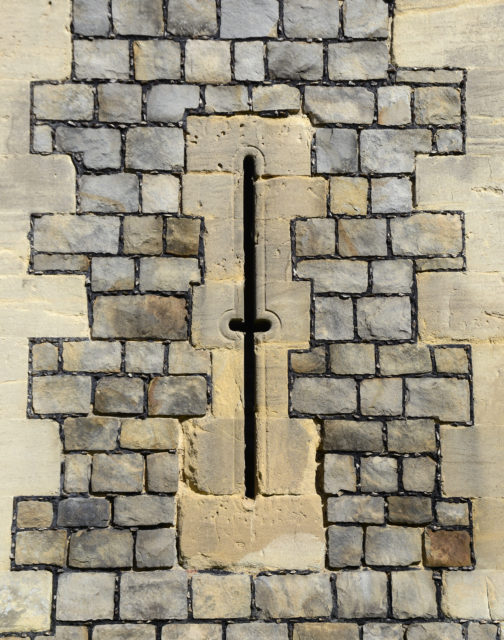
Arrow slits or loops are long vertical slits in castle walls that served as vital components of medieval defense. They were effective forms of protection, as invaders attempting to shoot at defenders would have a very small target to try and hit. Archers could shoot their arrows at approaching invaders while largely protected by the castle walls. In this way, defenders had a huge upper hand over their attackers.
Chemin de ronde
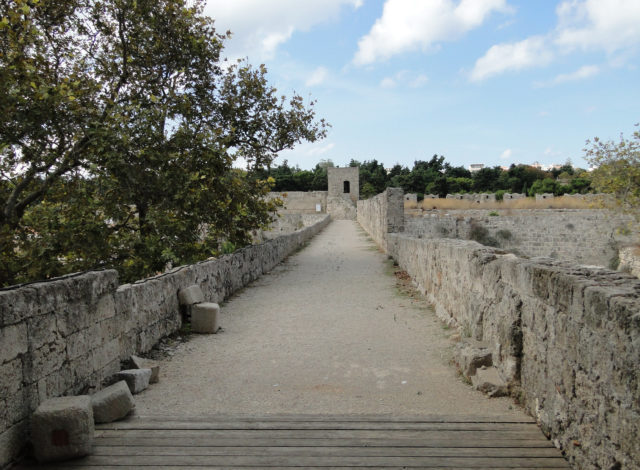
Chemin de ronde roughly translates to “walkway,” which is exactly what it was. Essentially, a pathway was built along the top of the castle that had short walls on either side to provide protection to castle defenders. These walkways served as a means for soldiers to move around the castle freely while still being protected from invaders. They also provided a way to observe from above, granting defenders a vantage point over their invaders and allowing them to attack from above.
Crenellation
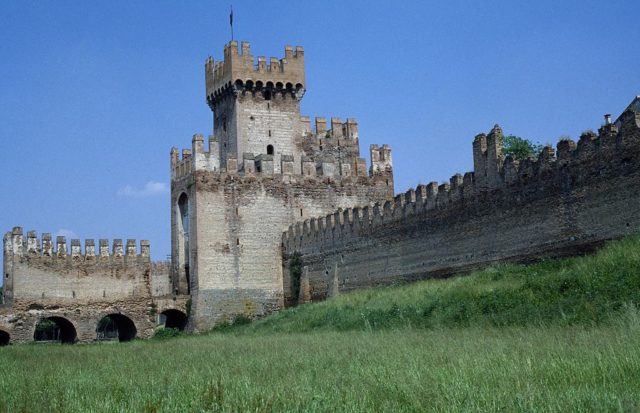
These are the super recognizable series of notches or ‘teeth’ seen along the tops of castle walls and towers. The individual parts are called merlons or crenels. Crenellations provided extra protection as soldiers walked along the chemins de ronde. Soldiers could be stationed behind the merlons or crenels and attack invaders from above.
Moat
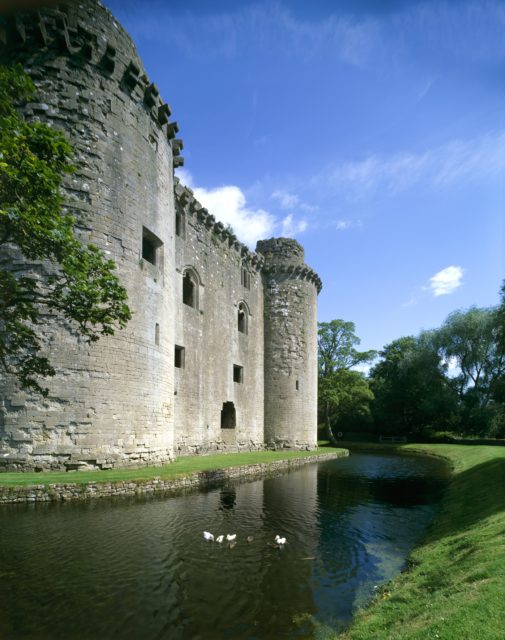
Moats are the large ditches that surround castle walls with a barrier of water. Invaders would have a very difficult time trying to break into a castle when there was a moat present. Trying to climb castle walls straight out of the water was a slippery and extremely difficult task. Moats could also be dry and equipped with spikes at the bottom. More importantly, moats prevented invaders from being able to dig under the castle walls.
Drawbridge
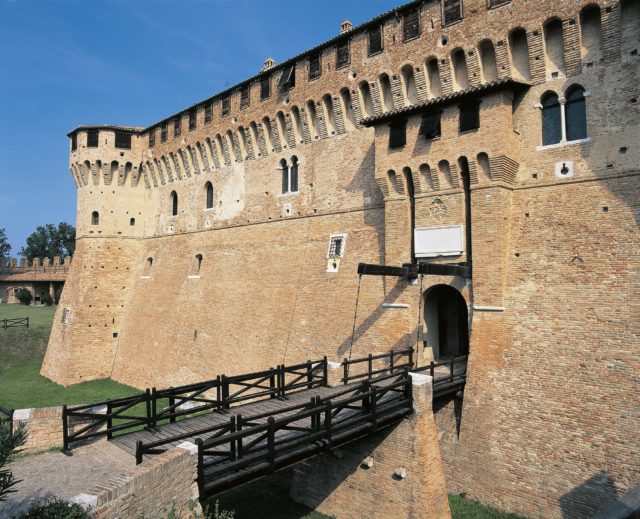
Those who were welcome within the castle walls needed a safe way to cross over the moat, and so the drawbridge was created. Using a series of ropes, chains, and pulleys, a bridge was dropped across the moat to the other side of the ditch. It could be raised again whenever necessary to prevent any unwanted visitors from gaining safe passage into the castle walls.
Machicolation
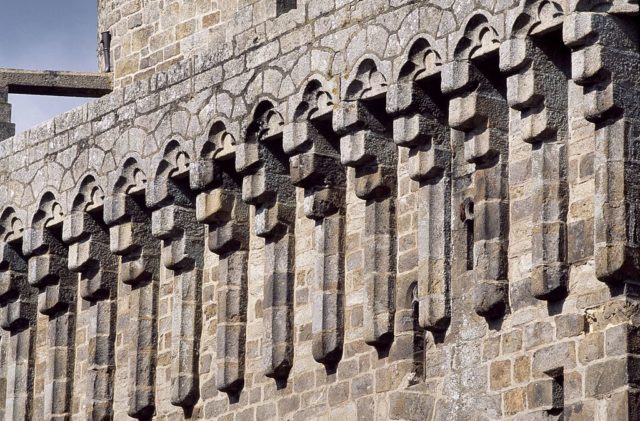
Machicolations are the openings between protrusions high up on the castle walls. They provide a means for defenders to attack invaders while under strong protection by the castle walls. Large, heavy objects could be dropped on unsuspecting invaders, crushing them or knocking them out, while producing absolutely no threat to the defender as they retreated safely behind the castle walls.
Portcullis gate
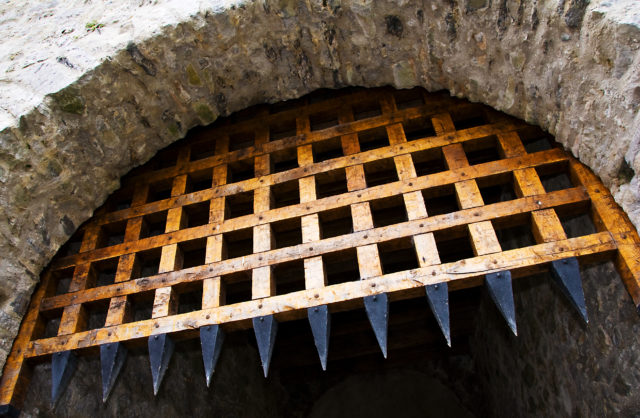
(Photo Credit: Kevin King / Wikimedia Commons, CC BY 2.0)
Another famous feature of medieval castles is the portcullis gate. Made from metal and strong wood, this gate would crush or prevent invaders before they could enter the castle walls. A recognizable criss-cross design along with sharp spikes along the bottom provided extra protection from invasion. The portcullis gate was lowered and raised using a system of pulleys and could be managed by just one guard.
Talus
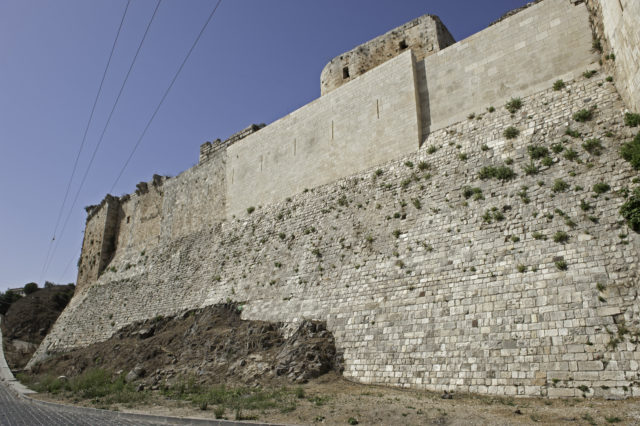
More from us: New York’s Haunted Bannerman Castle
A talus looks like a decorative architectural feature, but it actually served an important defense purpose as well. A talus is a specially built castle wall with a wider base that tapers toward the top. The design provided extra stability, making the walls more difficult to knock down. They were also far more challenging to climb. Additionally, defenders could drop heavy objects onto the sloped walls. They would bounce off of the talus and shatter, covering invaders with dangerous shrapnel.
